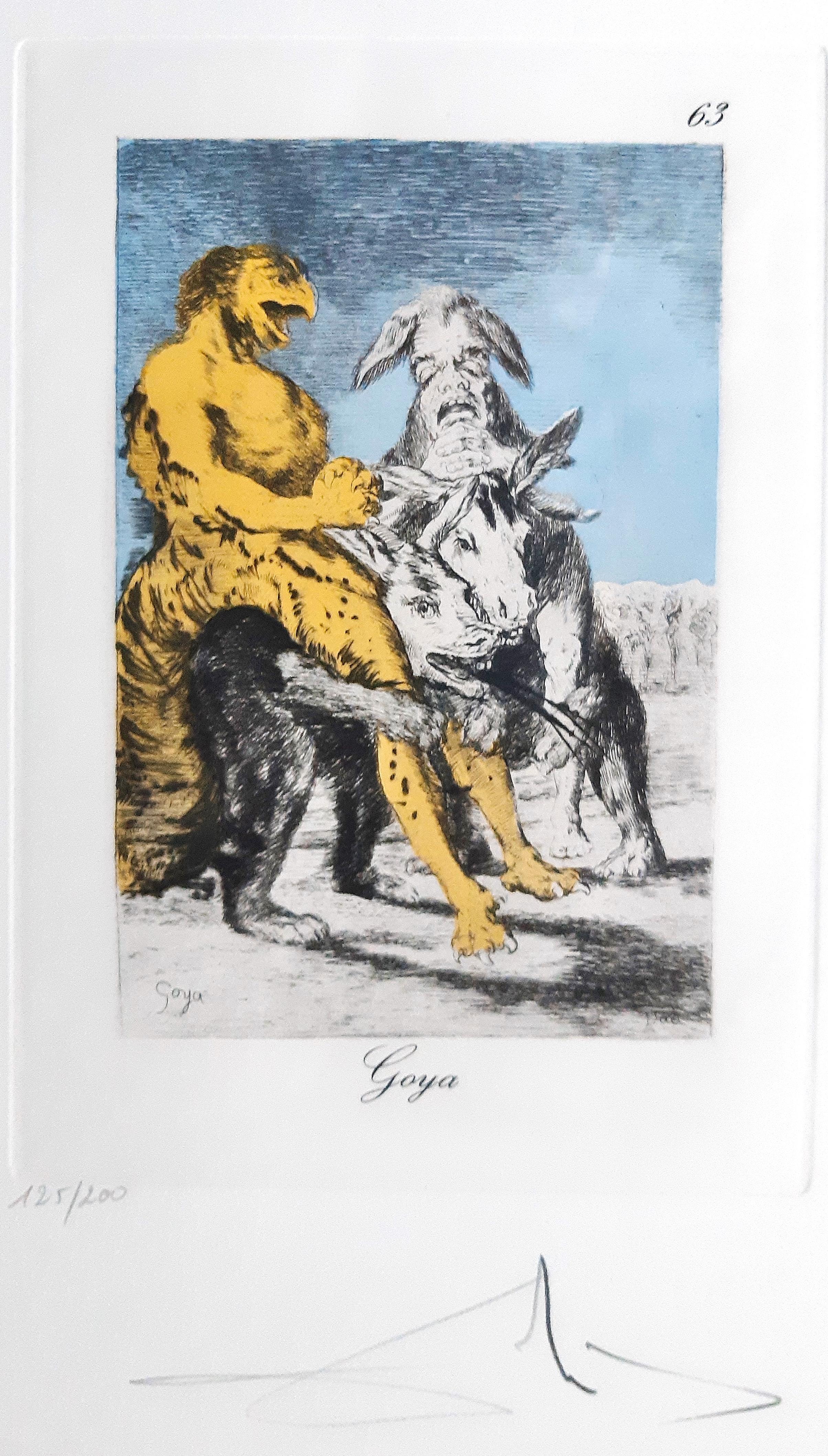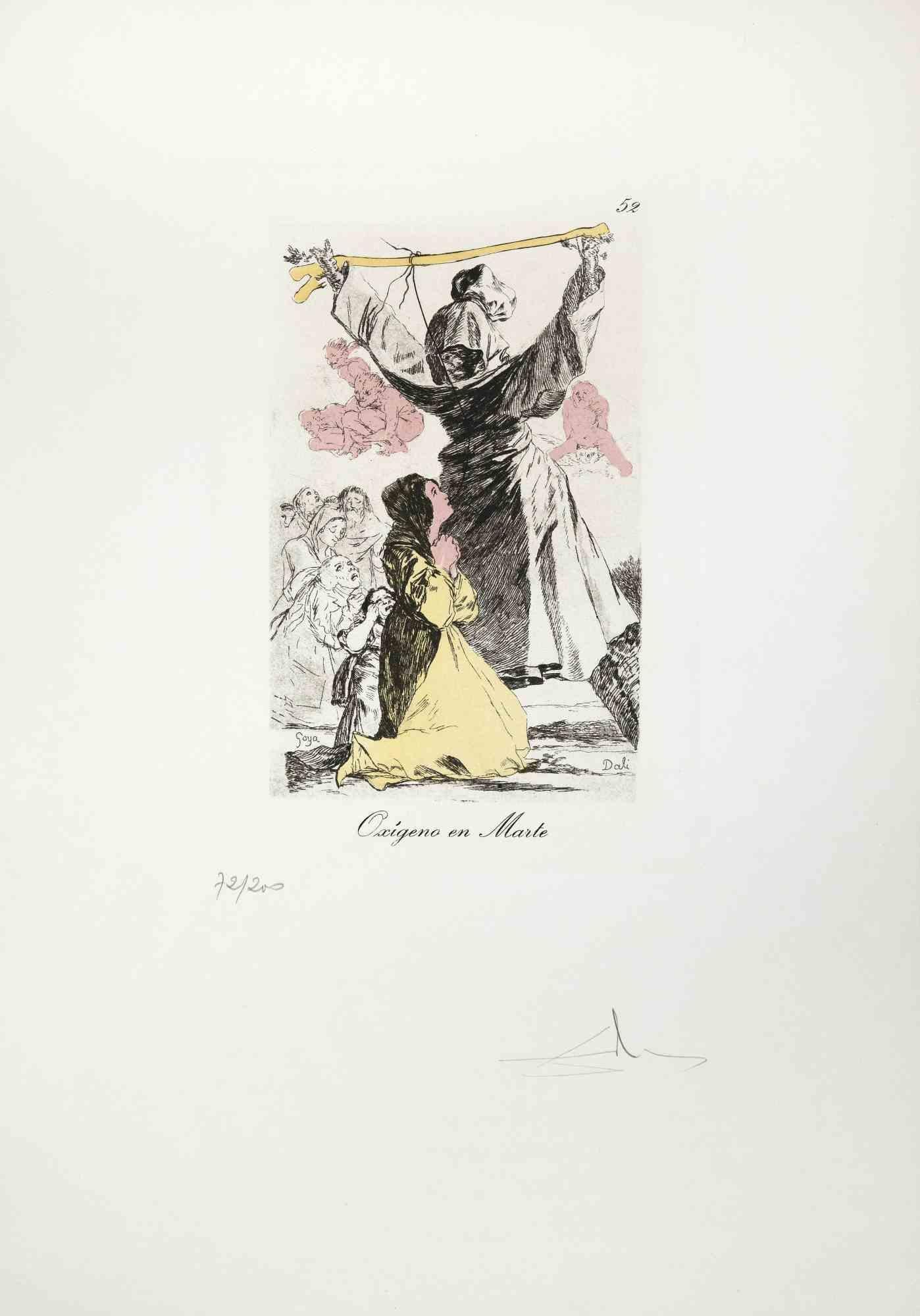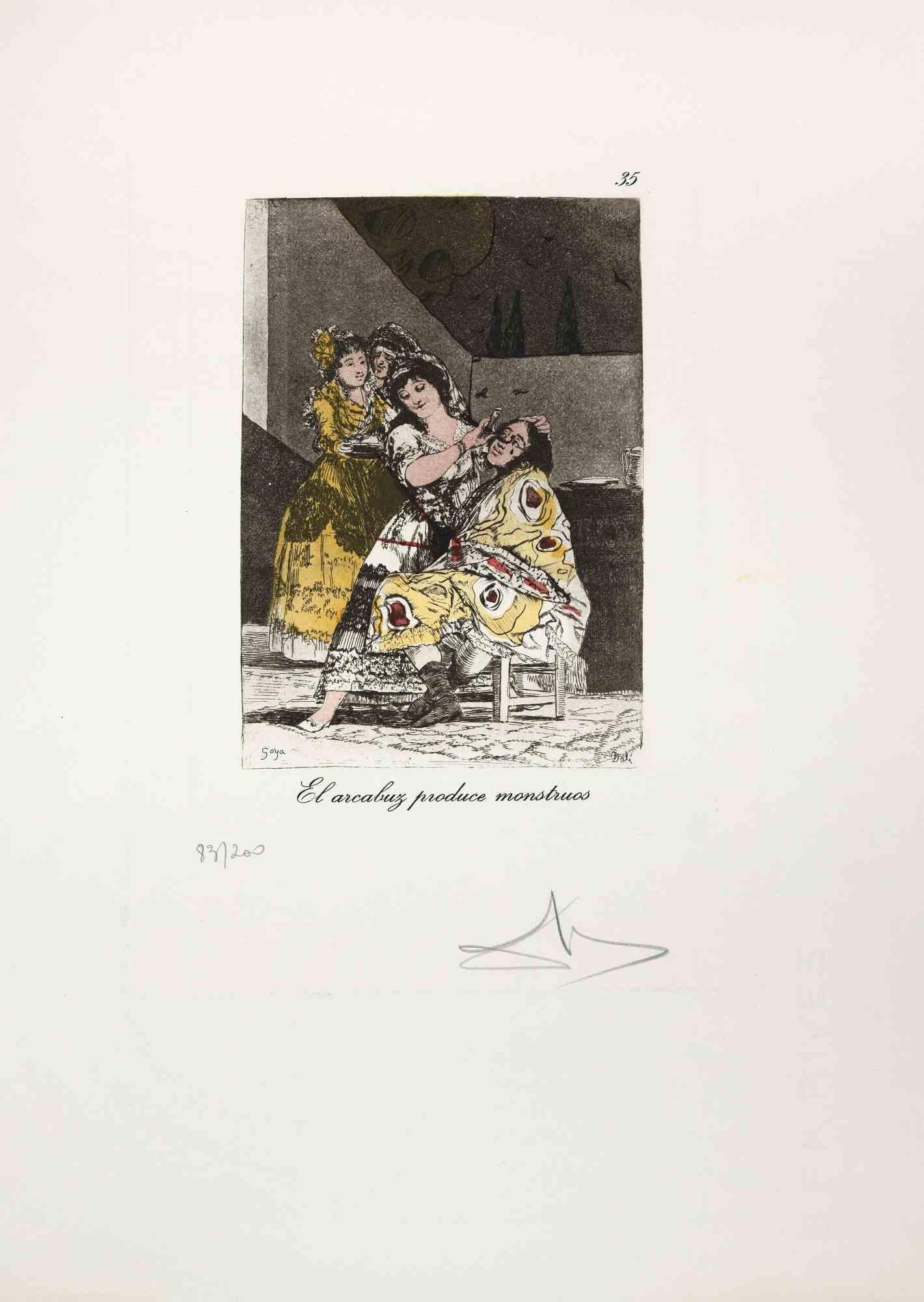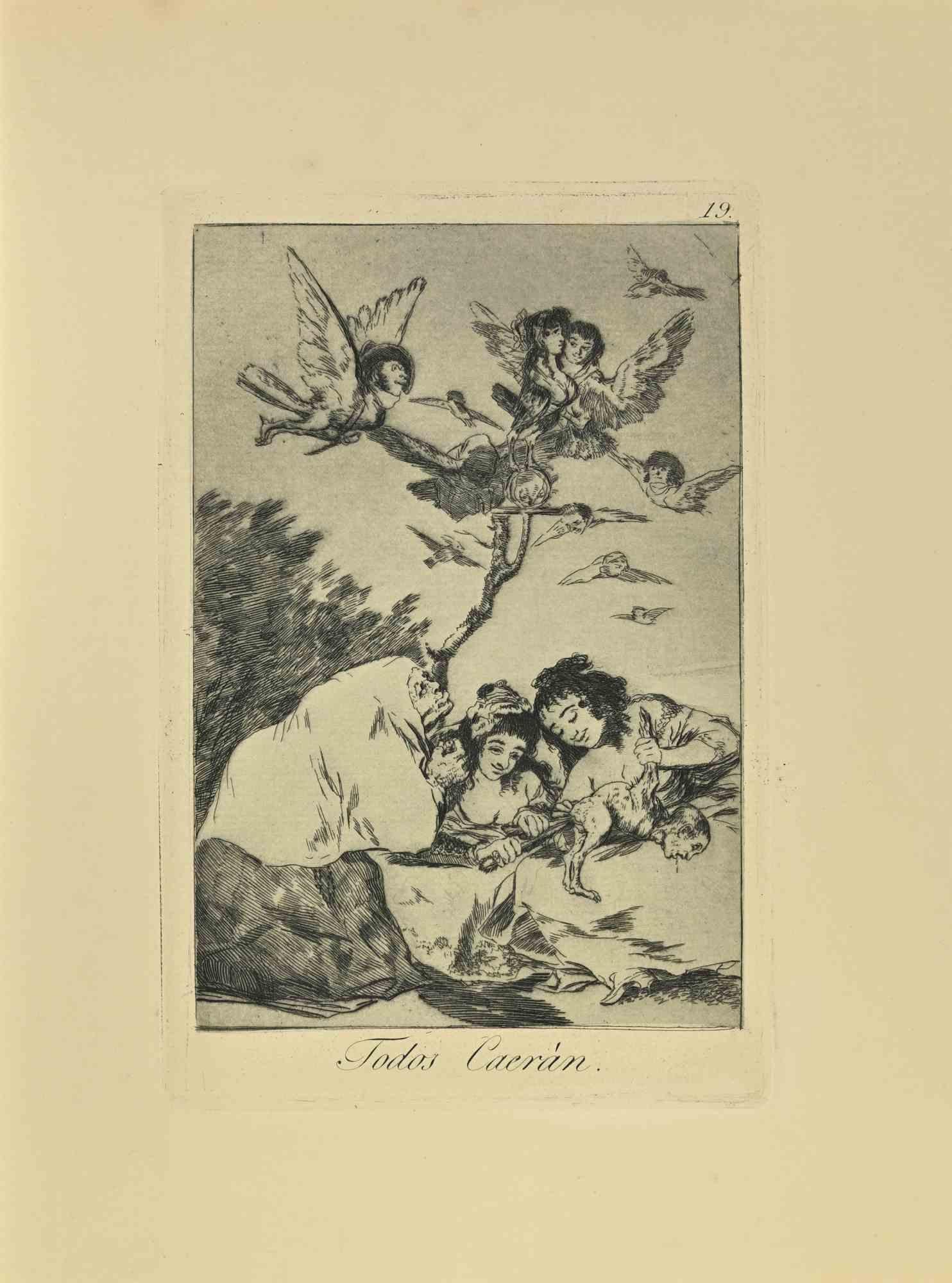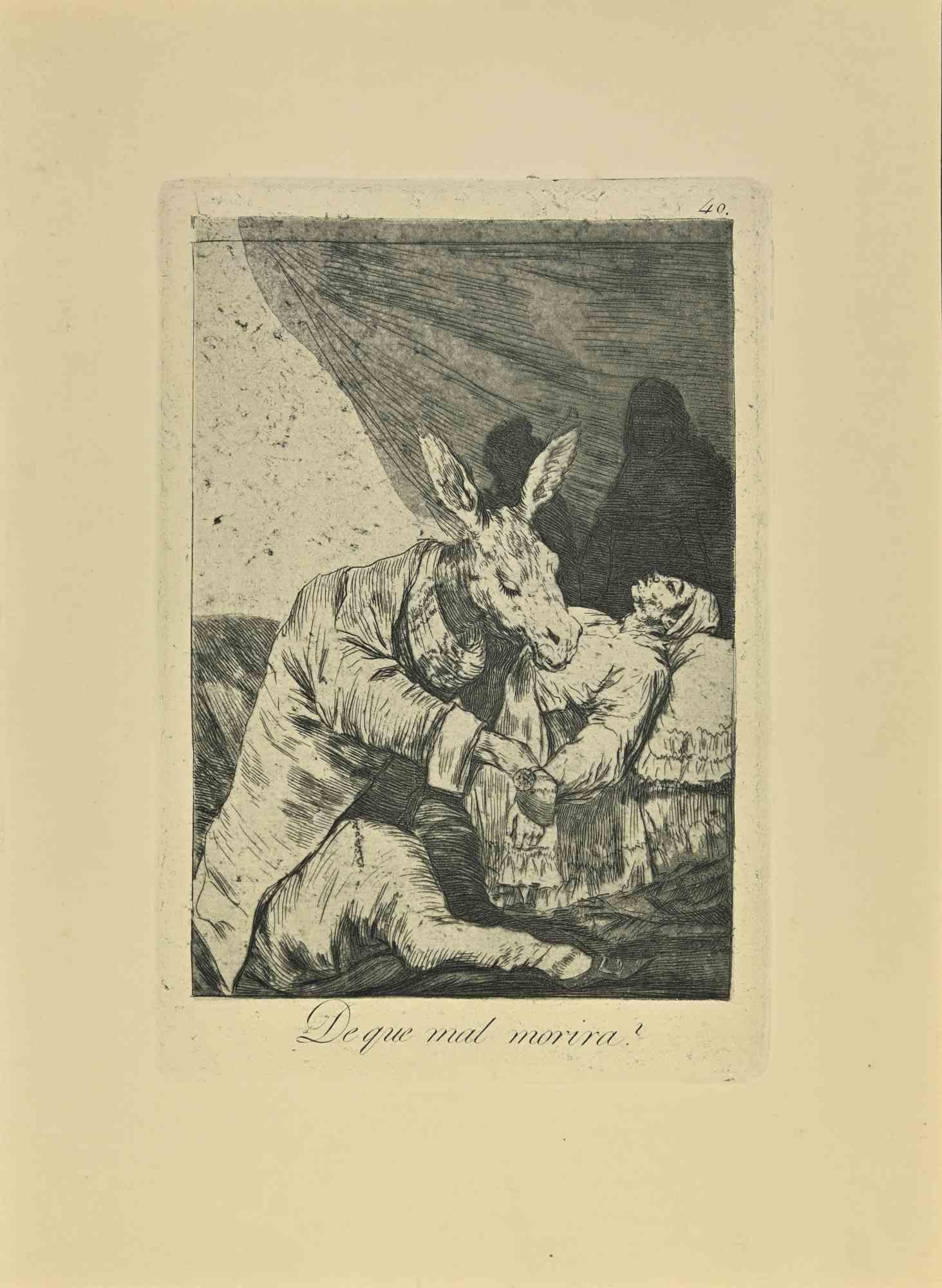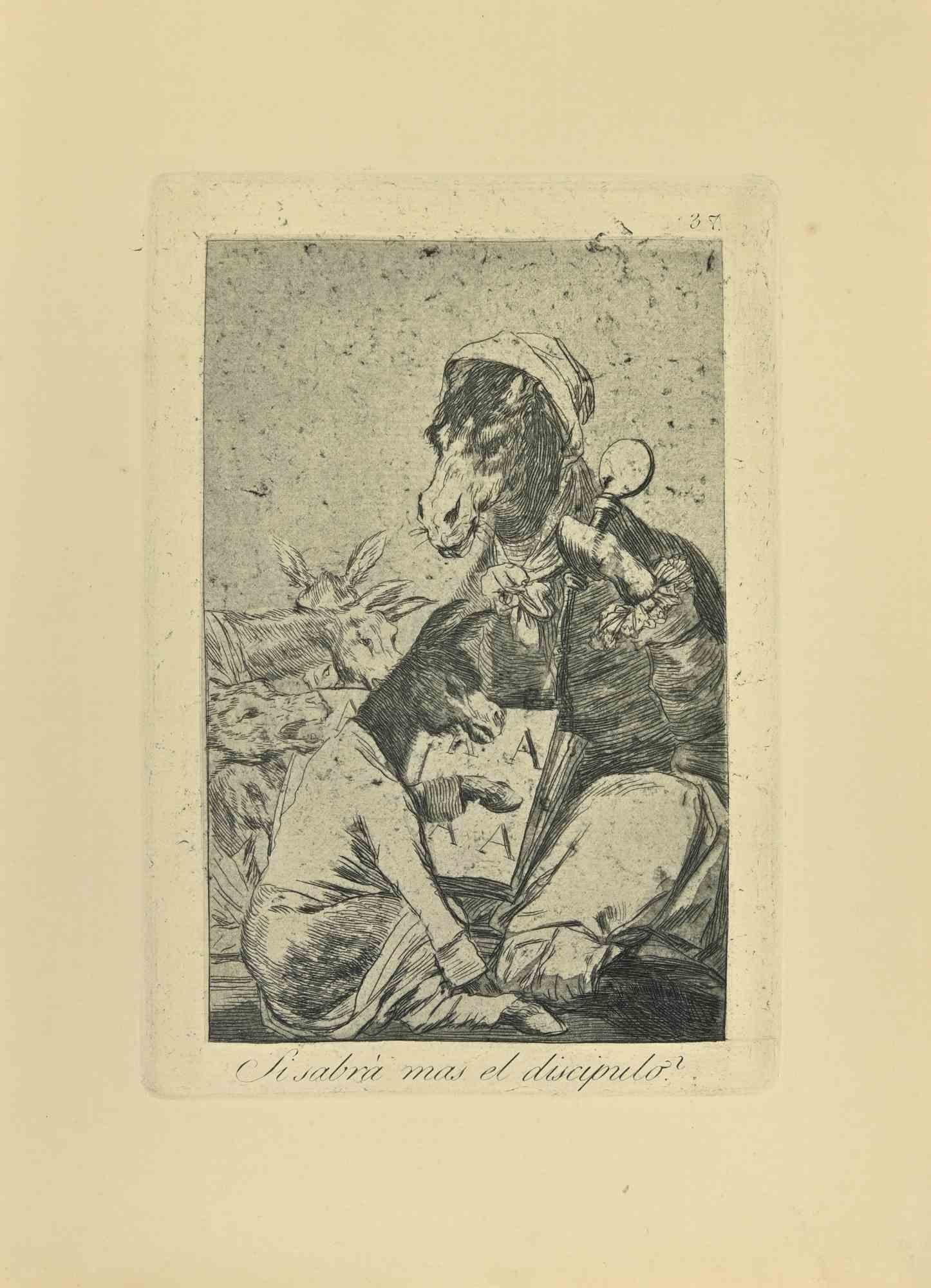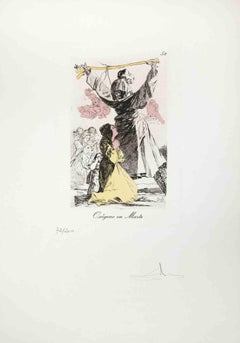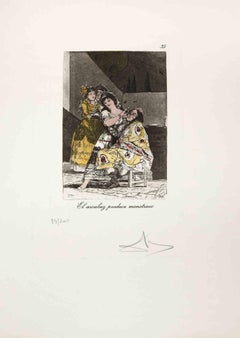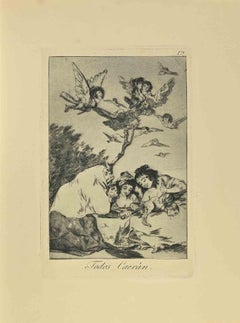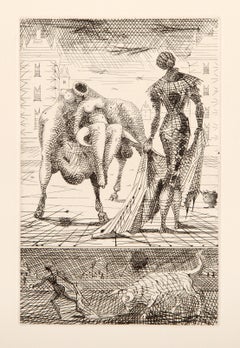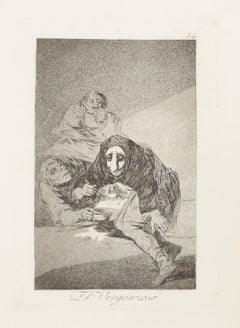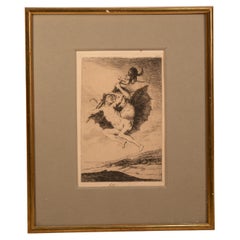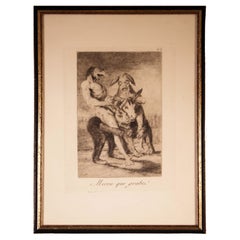Items Similar to Capricho de Goya n°7 - Héliogravure and Pochoir attr. to S. Dalì - 1977
Want more images or videos?
Request additional images or videos from the seller
1 of 7
Capricho de Goya n°7 - Héliogravure and Pochoir attr. to S. Dalì - 19771977
1977
$2,148.72
£1,594.46
€1,800
CA$2,996.85
A$3,246.33
CHF 1,709.32
MX$39,403.68
NOK 21,317.39
SEK 20,155.10
DKK 13,706.27
About the Item
Capricho de Goya n°7 is an héliogravure and stencil, realized in 1977, hand-signed and numbered n°125/200. Published by Berggruen Paris in 1977.
Image dimensions: 21x15 cm.
Included a walnut frame.
In very good conditions.
This artwork is from Les Caprices de Goya of Salvador Dali, which consists of 80 original etching and aquatint. The Spanish master Francisco Goya created the work “Los Caprichos” early in the 18th century. Goya described the series as depicting “the innumerable foibles and follies to be found in any civilized society, and from the common prejudices and deceitful practices which custom, ignorance, or self-interest have made usual”
Ref. Michler-Lopsinger no. 854, p.252.
Prov.: Private Collection, Parma.
Salvador Dalí (1904-1989), Spanish-born Surrealist artist, known for his technical skill, skillful and the striking and bizarre images in his work. Dalí's artistic repertoire included painting, graphic arts, film, sculpture, design and photography, at times in collaboration with other artists. He also wrote fiction, poetry, autobiography, essays and criticism. Major themes in his work include dreams, the subconscious, sexuality, religion, science and his closest personal relationships. Heavily influenced by Sigmund Freud, the avant-garde style explored consciousness and dream-like states through exaggerated landscapes and bizarre or grotesque imagery.
- Attributed to:Salvador Dalí (1904 - 1989, Spanish)
- Creation Year:1977
- Dimensions:Height: 17.52 in (44.5 cm)Width: 12.21 in (31 cm)
- Medium:
- Movement & Style:
- Period:
- Condition:Insurance may be requested by customers as additional service, contact us for more information.
- Gallery Location:Roma, IT
- Reference Number:Seller: M-1064361stDibs: LU65036136782
About the Seller
4.9
Platinum Seller
Premium sellers with a 4.7+ rating and 24-hour response times
1stDibs seller since 2017
7,737 sales on 1stDibs
Typical response time: 2 hours
- ShippingRetrieving quote...Shipping from: Roma, Italy
- Return Policy
Authenticity Guarantee
In the unlikely event there’s an issue with an item’s authenticity, contact us within 1 year for a full refund. DetailsMoney-Back Guarantee
If your item is not as described, is damaged in transit, or does not arrive, contact us within 7 days for a full refund. Details24-Hour Cancellation
You have a 24-hour grace period in which to reconsider your purchase, with no questions asked.Vetted Professional Sellers
Our world-class sellers must adhere to strict standards for service and quality, maintaining the integrity of our listings.Price-Match Guarantee
If you find that a seller listed the same item for a lower price elsewhere, we’ll match it.Trusted Global Delivery
Our best-in-class carrier network provides specialized shipping options worldwide, including custom delivery.More From This Seller
View AllCapricho de Goya n°63 - Héliogravure and Pochoir attr. to S. Dalì - 1977
By Salvador Dalí
Located in Roma, IT
Capricho de Goya n°63 is an original héliogravure and pochoir, realized by Salvador Dalí in 1977, hand-signed and numbered n°125/200.
Included a wooden frame.
In very good condi...
Category
1970s Surrealist Figurative Prints
Materials
Engraving, Stencil
Oxygeno en Marte - Heliogravure attr. to Salvador Dalì - 1970s
By Salvador Dalí
Located in Roma, IT
Oxygeno en Marte is an original contemporary artwork, plate n. 52 from the series "Les Caprices de Goya".
Heliogravure with pochoir by J.J.J. Rig...
Category
1970s Surrealist Figurative Prints
Materials
Paper, Etching
El Arcabuz Produce Monsters - Mixed Media attr. to Salvador Dalì - 1970s
By Salvador Dalí
Located in Roma, IT
El arcabuz produce monsters is an original contemporary artwork, plate n.35 from the series "Les Caprices de Goya".
Heliogravure with pochoir by J.J.J. Rigal after Goya...
Category
1970s Surrealist Figurative Prints
Materials
Paper, Mixed Media, Etching
Todos Caeran - Etching by Francisco Goya - 1881
By Francisco Goya
Located in Roma, IT
Todos Caeran is a black and White aquatint, drypoint, and etching printed in blue-black ink on laid paper from Caprichos realized after Francisco Goya in 1881-1886.
6th Edition.
T...
Category
1880s Modern Figurative Prints
Materials
Etching
Deque mal Morira? - Etching and and Aquatint by Francisco Goya - 1881
By Francisco Goya
Located in Roma, IT
Deque mal Morira? is a black and White aquatint, drypoint and etching printed in blue-black ink on laid paper from Caprichos realized after Francisco Goya in 1881-1886 .
6th Edition...
Category
1880s Modern Figurative Prints
Materials
Etching
Si Sabrá Mas - Etching by Francisco Goya - 1881
By Francisco Goya
Located in Roma, IT
Si Sabrá Mas is a black and White aquatint, drypoint, and etching printed in blue-black ink on laid paper from Caprichos realized after Francisco Goya in 1881-1886.
6th Edition.
T...
Category
1880s Modern Figurative Prints
Materials
Etching
You May Also Like
Le Taureau Blanc IV, Surrealist Etching by Lucien Coutaud
By Lucien Coutaud
Located in Long Island City, NY
Lucien Coutaud, French (1904 - 1977) - Le Taureau Blanc IV, Year: 1957, Medium: Etching, Image Size: 7.75 x 5 inches, Size: 13 x 10 in. (33.02 x 25.4 cm), Description: From the col...
Category
1950s Surrealist Nude Prints
Materials
Etching
El Vergonzoso (Plate 54) (Los Caprichos Series)
By Francisco Goya
Located in London, GB
Francisco Jose Goya Y Lucientes
El Vergonzoso (Plate 54)
(Los Caprichos Series)
1799
Etching with aquatint
31.5 x 20.5 cms (12.4 x 8.1 ins)
Category
Late 18th Century Figurative Prints
Materials
Etching
“Allá va eso”, Los Caprichos. Framed engraving. Original by GOYA Y LUCIENTES
By Francisco De Goya
Located in Madrid, ES
“There goes that”, Los Caprichos. Framed engraving. Original by GOYA Y LUCIENTES, Francisco.
It has damage.
The original was an etching belonging to the series Los Caprichos by Fran...
Category
Antique 19th Century Spanish Other Prints
Materials
Other
Francisco Goya Miren Que Grabes from Los Caprichos 1868 Etching Framed
By Francisco Goya
Located in Keego Harbor, MI
A macabre etching and aquatint on paper titled “Miren que grabes!” from Los Caprichos by Spanish artist Francisco Goya. Signed in the plate. Numbered 63 ...
Category
Antique 1860s Prints
Materials
Paper
Épris d'une folle passion - Original etching - 1979 - 50 exem
By Salvador Dalí
Located in Paris, IDF
Salvador Dali (1904-1989)
Épris d'une folle passion (1979)
Original Etching on Japon paper
Handsigned in pencil, and printed signature in the plate
50 exemplars
Size : 22.2 x 30 i...
Category
1970s Surrealist Figurative Prints
Materials
Etching
Salvador Dalí (1904-1989) - La cogida y la muerte - Drypoint, etching - 1973
By Salvador Dalí
Located in Varese, IT
Drypoint etching on Arches paper, edited in 1973.
Limited edition of 400 copies, numbered 352/400 in lower left corner.
Hand-signed by artist in pencil in the lower right margin.
Pa...
Category
1970s Abstract Prints and Multiples
Materials
Etching, Drypoint
More Ways To Browse
Nude Flask
Nude With Garter Dali
Odilon Redon On Sale
Oli Epp
Original Etching Roman Emperor
Ota Masamitsu
Oyvind Fahlstrom On Sale
Pablo Picasso Signed Aquatint
Pablo Picasso The Kiss
Parc Monceau Harold Altman
Pegge Hopper Print
Peter Max 1972
Peter Max Angels Signed
Peter Max Liberty And Justice For All
Peter Max Seasons
Peter Max Smile
Peter Schmidt On Sale
Phoebe Cole
